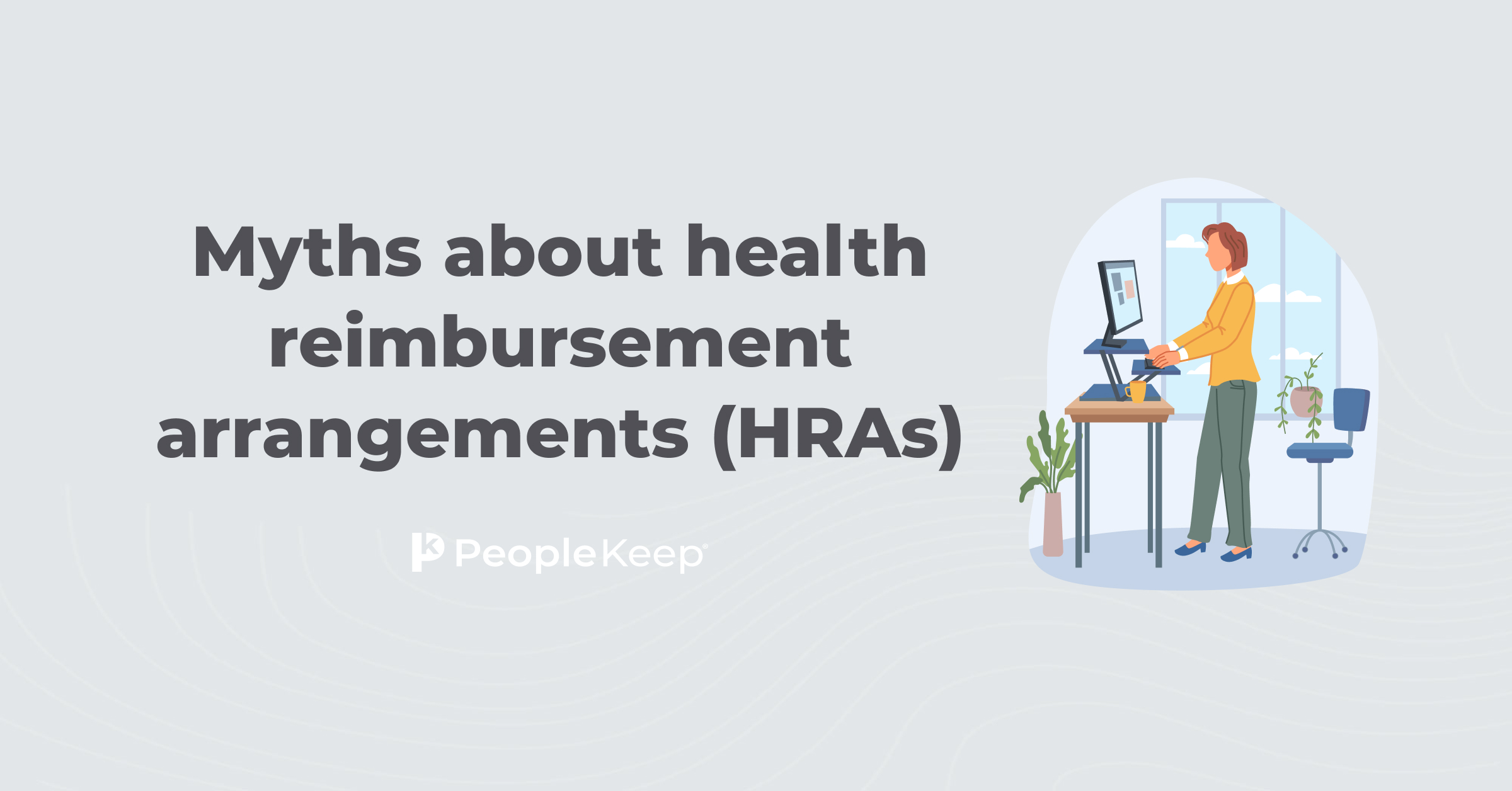What is a burden rate?
By Holly Bengfort on May 8, 2024 at 6:24 AM
Running a business can involve various hidden costs, especially when you start to hire workers. Business owners and HR professionals must understand their burden rate to avoid unpleasant surprises and ensure they have the budget to support their workforce.
In this article, we'll go over the details of burden rates and why they're an important consideration for any organization.
Takeaways from this blog post:
- Calculating the burden rate helps employers understand the total labor cost of hiring a worker, beyond their direct compensation.
- Understanding the burden rate can help businesses make informed budgeting decisions about pricing, labor, and additional employee benefits.
- Offering cost-effective health benefits, such as a health reimbursement arrangement (HRA), can help businesses reduce their burden rate while still providing valuable employee perks.
Definition of burden rate
A burden rate is the total indirect costs associated with employing a worker, expressed as a percentage of the worker's direct labor cost.
A company's burden rate helps employers compare indirect employment costs to direct costs. Other terms for burden rate include manufacturing burden costs, indirect production costs, labor burden rate, labor burden costs, and other similar terms.
The additional expenses1 that impact the burden rate can include the following:
- Payroll taxes
- Medicare
- Social security
- FICA and FUTA
- Fringe benefits
- Health insurance costs
- Retirement benefits/retirement contributions
- Paid time off
- Any additional perk costs like life insurance premiums, disability insurance, or employee stipends
- Use of company vehicles
- Use of company cell phones
- Training costs
- Employee development
- Workers' compensation
- Company apparel or uniforms
By calculating burden costs, businesses can more accurately determine the true cost of each employee and allocate resources accordingly.
The difference between overhead costs and burden costs
Overhead costs cover everything it takes to keep a business running, such as electricity, rent, office supplies, marketing costs, and administrative expenses. Labor burden includes the additional costs of employing your team.
How to calculate burden expenses
To calculate the burden rate, you first need to determine each employee’s total direct and indirect labor costs, which may vary depending on factors such as the employee's base salary, benefits package, and other expenses. Once you have calculated these indirect costs, you can divide them by the employee's direct labor cost (their base salary and wages) to determine the burden rate as a percentage.
For example, if an employee's regular salary is $50,000 per year and their total indirect expenses amount to $15,000, the burden rate would be calculated as follows:
$15,000 (indirect employee costs) / $50,000 (direct labor cost) = 0.30 or 30%
This means that for every dollar spent on direct labor costs, there's an additional 30 cents in indirect employee costs.
Average burden rate for employers
Based on information from the U.S. Small Business Administration2, the total cost of an employee is typically around 1.25 to 1.4 times their salary. For example, employing someone with a salary of $35,000 could actually cost $43,750 to $49,000.
Understanding the burden rate for your business
By accurately calculating the burden rate, businesses can make more informed decisions about pricing their products or services, budgeting for labor costs, and determining the profitability of certain projects or contracts. It also helps businesses gain insight into their cost structure and pinpoint opportunities for cost reduction or optimization.
How to offer cost-effective benefits
If your burden rate shows that you're spending more money than you'd like to be, you may think cutting back on employee benefits is the cost-saving solution to your problem. But this won't go well in the long run.
Doing away with competitive benefits can hurt employee recruitment and retention. According to our 2024 Employee Benefits Survey, 81% of employees said an employer’s benefits package is an important factor in whether or not they accept a job.
Health benefits are also the most desired employee benefit, with 92% of employees rating them as important. Due to the high cost of traditional group health plans, offering a health benefit is often difficult for many employers. This is where a health reimbursement arrangement (HRA) comes in handy.
HRAs are cost-effective alternatives to group health plans. They're IRS-approved, employer-funded health benefits. With an HRA, employers can reimburse their employees tax-free for qualifying healthcare expenses and health insurance premiums. This allows them to reimburse employees for their individual health insurance coverage rather than purchasing a group policy for them.
Here are some of the advantages of HRAs:
- They're accessible to all employers and budgets. Group health insurance is expensive. It comes with unpredictable rate increases and steep participation rates. HRAs don't have either. Employers simply set a monthly allowance, and employees can request reimbursement for their qualified medical expenses.
- They're tax-advantaged. HRA reimbursements are exempt from payroll taxes for employers. Employees must have MEC coverage to participate in an HRA, meaning their HRA funds are also tax-free.
- They empower employees. Group health plans are one-size-fits-all. Employees don't have the freedom to choose their own insurance plan. This means they may get stuck with one that doesn’t work with their preferred doctors or services. But with an HRA, employees can choose individual health insurance plans that fit their unique needs. They can also choose which expenses they want to submit for reimbursement.
Here are two HRAs that work in place of a traditional group health plan:
- The qualified small employer HRA (QSEHRA): The QSEHRA is for small businesses and nonprofits with fewer than 50 full-time equivalent employees (FTEs). Employers must offer a QSEHRA to all W-2 full-time employees, but they can choose whether or not to extend it to part-time employees. The IRS sets maximum annual contribution limits for the QSEHRA.
- The individual coverage HRA (ICHRA): The ICHRA works for employers of all sizes, but employees need their own individual health plans to participate in the benefit. ICHRAs offer greater flexibility than QSEHRAs. They don't have annual contribution limits, and employers can offer different allowance amounts using up to 11 employee classes, such as full-time or part-time workers.
Conclusion
Running a business costs money. The burden rate is a critical metric for businesses to track and manage their total costs effectively. By calculating and monitoring the burden rate for each employee, businesses can gain valuable insights into their true costs of labor and make more informed financial decisions.
This article is for informational purposes only. If you have additional questions about your situation, you should consult a professional legal or tax advisor.
Check out more resources
See these related articles

What is a no-deductible health plan?
Wondering what a no-deductible health plan is? Find out how these insurance options can provide comprehensive coverage without the burden of deductibles.

How to set up an HRA
Learn how to set up an HRA for your business. Follow these steps to offer tax-free health reimbursements and provide flexible benefits to your employees.

Myths about health reimbursement arrangements (HRAs)
Learn the truth about health reimbursement arrangements (HRAs) with this informative guide. Bust the myths and understand how HRAs can benefit you.



